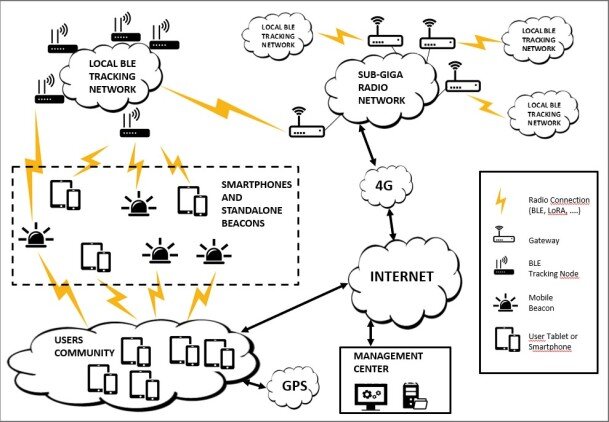STA Newsletter
Issue # March 2019
A bi-monthly online journal providing news and background about activities undertaken by STA with a view to improving the methods, technologies and standards associated to transportation infrastructures.
EPD®s, a strong asset in understanding the environmental performance of vehicle restraint systems
12 March 2019
Patrick Le Pense (ArcelorMittal Europe) and Claudia Cofano (CRM Group – AC&CS) analyse the potential of EPD® for the evaluation of the environmental impact of vehicle restraint systems. This STA Discussion Paper is featured in "Thinking Highways", Global Edition, Volume 14, Feb-Mar 2019 .
An Environmental Product Declarations (EPD®) is an independently verified and registered document that communicates transparent information about the life-cycle environmental impact of products. Published EPD® for steel construction products demonstrate the benefits of high strength steel grades and ZM coatings for vehicle restraint systems.
Transport and Mobility;
Environment;
People;
Living;
Governance;
Economy.
The STA Technical Report 1/2019 reviews the methodology followed, based on a common online questionnaire submitted to both cities and start-ups.
New STA Discussion Paper reviews the application of Bluetooth Low-Energy Networks to Smart Mobility Solutions
20 March 2019
The 2nd Discussion Paper of 2019, authored by Francisco Aletta of Etelätär Innovation, offers a technical review of the so-called BLEUN research project (Bluetooth Low Energy Urban Networks).
RTLS (Real Time Location Services) can be provided using different existing technologies, such as GPS (global positioning system), RFID, UWB or Bluetooth. However, modern nomad devices such as smartphones, offers new functionalities that can open the gate to a full new spectrum of mobility applications. Bluetooth may be the most promising, and its advantages and possible applications are discussed in this Discussion Paper.
“
Infrastructure defines our cities and landscapes way more than the cars
”
NEWS OF INTEREST
Thinking Highways: The Evolution Continues…
15 March 2019
You will be pleased to know that the new issue of Thinking Highways is out now. The big news is that we are presenting it in a brand new, web-based format.
First of all, we aren’t eschewing print. What we are doing is reacting to the changing way in which people consume media. We’re living in an era where everything is becoming increasingly “instant” and with an entirely print-based product it’s not always possible to meet evolving demands. This exciting new multimedia format allows us to do that in ways that just weren’t even imaginable when we published our first issue in October 2006.
Is this the end of the road for roads?
10 March 2019
As the Fourth Industrial Revolution ushers extraordinary technologies and the world continues to place a greater emphasis on vehicles, innovation and mobility, the way we conceptualise and build our roadways is set for a major change.
This is the view of Anton Hartman, Technical Director for Pavements and Materials at Aurecon who argues that in our journey to the autonomous future, we have forgotten to transform our roads.
“What’s the use of having smart cars if our roads are dumb? With more opportunities for innovative reinvention than ever before, is it quite possible that we are coming to the end of roads as we know them?” Hartman asks in Aurecon’s latest Just Imagine blog post.
“Coupled with the current wave of innovation to design for sustainability, there is an equal imperative to see our new and old infrastructure becoming smarter,” he says
Future of Highways Maintenance | 3D printing
18 March 2019
Innovative research into 3D printed asphalt is resulting in unforeseen findings of potentially considerable significance to highways surfacing maintenance.
Development of a system that detects cracks in road surfaces autonomously and then repairs them to forestall the formation of potholes is – in essence – a principal element of the fascinating Self-Repairing Cities (S-RC) project.
Led by Leeds University, and now three years into a five-year programme, S-RC’s research into road surfacing maintenance has focused on drones and 3D printing.
The other partners on the project are University College London (UCL) and the Universities of Southampton and Birmingham.
While Leeds is concentrating hard on the robotics and autonomous control systems, UCL is developing a 3D printing system and the asphalt that will be extruded by them.
Described at the time by the minister of transport, Harold Watkinson, as a ‘guinea pig’ for all future projects, the Preston Bypass provided an initial blueprint for motorway design and construction.
In a world of autonomous vehicles, we’ll still need walking and cycling routes
4 March 2019
We are on the cusp of dramatic changes in the way we own, use and power our means of transportation. The mobility revolution is shifting from an “if” to a “where” and when”.
There are two different futures currently being imagined. First up, a heaven, of easy mobility as portrayed by autonomous vehicle (AV) manufacturers, with shared-use AV freeing up road space for public spaces and accidents reduced to near zero. Or alternatively, a hellish, dystopian pod-world, with single-occupancy pod-armadas leading to an irresistible demand for more roads, and with people cloistered away in walkways and tunnels; Bladerunner but with added trees.
Most likely, the reality will turn out to be somewhere in between, as cities and regions across the globe shape and accommodate innovation and experimentation.
But in the understandable rush for the benefits of automation we need to start with the end in mind. What type of places do we want to live in? How do we want to relate to each other? How do we want to be?






